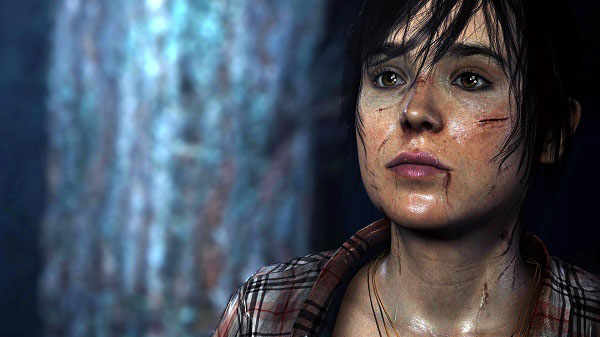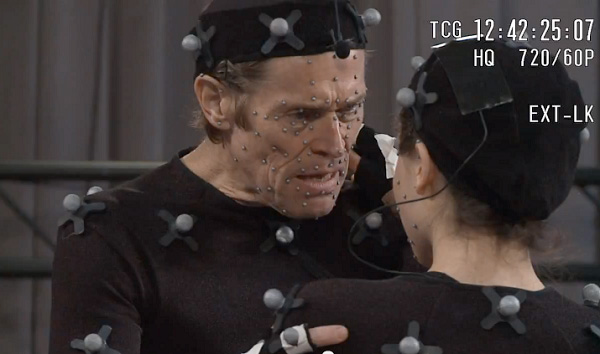In his Games Development Conference (GDC) presentation in Cologne, Germany this week, Quantic Dream’s founder and COO David Cage emphatically told a packed out audience “I believe the future of games is meaning” and then explained that the way he embeds emotion into video games is to artistically look at and technically learn from movies.
Part love-letter to the film industry, part peek behind the Quantic Dream curtain, David Cage openly dared to state that video games are an art form, but still quite niche and that unlike cinema and TV, they admittedly have some way to go in appealing to wider, non-gamer audiences. His approach in trying to resolve this has been to explore the medium of film; borrowing techniques and practices to merge cinematography with interactivity. Heavily influenced by big screen dramas with engaging characters and thrilling, engrossing plots, Heavy Rain gave gamers an early insight into Cage’s attitude, whilst his latest research and methods are sure to captivate greater audiences via Quantic Dream’s Beyond: Two Souls, due for release on the PlayStation 3 in October this year.
“There is no new innovation from television or movies” Cage began as he talked about how audiences find greater depths of emotion from moving images, “But there is with videogames. No new medium can ever be created without referencing what has gone before, and as we are innovating, we should also be looking at and learning from film if we want emotion in our games.”

Cage acknowledged those who ask him why he doesn’t just make a film or question why he wants to link games and cinema, and was very clear in his response. He wants to create games that have something to say. He wants players to feel moved and to look at the world a little differently after playing. “Merging cinematography, which some gamers think is about long cut scenes, and interactivity, which is predominately shooting action, means instead we can tell a story through a player’s actions or make them tell the story through the actions and choices that they make within the game, without simply resorting to long cut scenes to tell the story. Combining cinematography and Interactivity gets the player emotionally involved, projecting themselves into the game, and keeps them interested from the first to the last moment.”
According to Cage, the future of gaming doesn’t lie in technology and simply throwing as many polygons as possible at the game (although he admitted that Quantic Dream’s tech demo of The Dark Sorcerer – a powerful yet comedic short – was born out of seeing just what level of detail was possible in real-time on the eagerly awaited PlayStation 4), but lies in creating better stories, meaning and emotion.
He also went into detail about how important the filming process was in order to get the best performances out of the actors. “We have a team of 12 people to scan the entire body of the actor, and then capture all the nuances of facial expressions from neutral to extreme” Cage explained. On the Beyond: Two Souls set, there were 65 cameras filming 360 degrees simultaneously so the actors didn’t simply have one point of view or focus. There were no markers for lighting and a wireless microphone recorded every second. “Though initially it was such a new experience for the actors that they struggled on the first day, filming in this way totally frees up the actor and brings about a greater performance. The system is non-intrusive compared to film and is probably more akin to acting for the stage.”
By shooting the animations (characters) first, which can’t be changed once it’s done, the next creative stage in the process was then deciding where the final camera shots or lighting will be, all added after the filming. “We totally respect the rules of cinematography.” Cage stated though. So much so that when adding the camera and lights, Quantic Dream used a game design programme that emulates real, physical cameras with different lenses so they can add depth of field, authentic close ups and almost recreate the tiniest, slightest, movement that would be expected were a human cameraman calling the shots. “We do this not only to create a digital language that everyone is familiar with, but also because, like Orson Wells’ Citizen Kane, we can use cameras to help us tell the story, not just show it.”

Another big difference from traditional filmmaking, relates to what and when they shoot game footage, as they filmed in tiny fractions. “As everything in the game is interactive, we need to break up everything into small fragments; the smaller the fragments, the more fluid the experience for the player. The player decides on how they play with the fragments in what order and when. One fragment might only last 3 seconds as an actor opens a door." With so many choice branches built into the game, this process creates a massive volume of assets and work for Quantic Dreams to take care of, but it’s integral to how the overall meaning of the game is conveyed “Turning a light on and off in the right context at the right time, can become full of meaning…” according to Cage.
This process has attracted high profile movie stars Ellen Page and Willem Dafoe who head up the Beyond: Two Souls cast list, whilst the game already promises to be a story driven experience. “We had 2000 pages of script, it took a whole year of shooting footage every day. The game has 20,000 unique camera shots and 16 hours’ worth of non-linear play” boasted Cage, which led me to wonder how he intends on following up such and intensive, large scale, emotional project.
“I predict photorealistic rendering will of course be important in the future as films and games become ever closer, but I’d love to see something like procedural filming where we could maybe build a cinematography programme that could adapt, record and integrate the role of director to the process or even the game” Cage hurriedly enthused. “Imagine an algorithm like ‘Stanley Kubrick’ that looks at lenses he used, or worked in his favourite shots!”
If games are to become yet more emotional and have meaning, Cage insists that games studios will require more directors with knowledge of cinema techniques, and so he finished his talk by encouraging more developers to learn more about film. Gaming audiences are invited to experience and engage what ‘meaning’ means to Cage when Beyond: Two Souls is out this autumn.